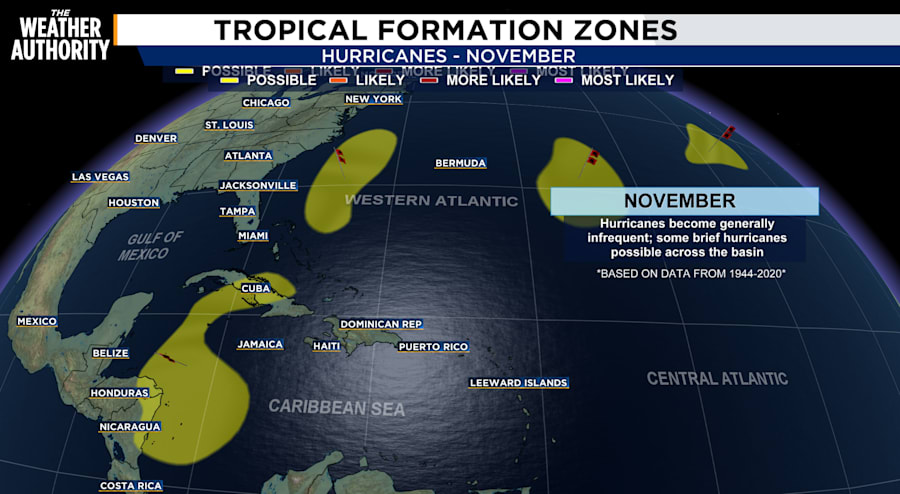JACKSONVILLE, Fla. – After the devastation left by Hurricanes Helene and Milton this year, many Floridians are still in recovery mode. Communities across the state have faced major challenges, including widespread flooding, extended power outages, and severe damage to homes and infrastructure.
Fortunately, recent cold fronts have brought some relief. With dry air and lower humidity, cleanup efforts benefit from these cooler conditions as the Florida Peninsula begins to dry out.
Recommended Videos
Cold fronts can be beneficial and problematic this time of year as hurricane season winds down. On the one hand, cold fronts can bring steering patterns that direct storms—such as Hurricane Milton—toward Florida, as systems in the Gulf get nudged eastward by these fronts.
On the other hand, they can also play a protective role, deflecting or tearing apart tropical disturbances in the Caribbean and Atlantic, significantly reducing the storm threat in the coming weeks.
As of Wednesday, current tropical waves in the Atlantic show no imminent danger to the U.S., according to forecast models. This much-needed pause in storm activity gives Florida the opportunity to focus on recovery and rebuilding, without the constant fear of another hurricane on the horizon.
As hurricane season nears its end, the likelihood of storms making landfall in the U.S. decreases, but the threat doesn’t vanish entirely. Historically, Florida has been the most common target for late-season hurricanes, while other parts of the country face far less risk.
RELATED: Tropical disturbance heading in Florida’s direction begins to fizzle
Florida: The Exception
When a hurricane does strike the mainland after mid-October, it’s almost always Florida. Of the 15 U.S. hurricanes that made landfall after Oct. 19, 11 hit Florida, particularly in the central and southern regions. Recent examples include:
- Hurricane Nicole (November 2022): Made landfall along Florida’s Atlantic coast.
- Hurricane Zeta (October 2020): Struck Louisiana but affected the Southeast.
- Hurricane Wilma (October 2005): Hit South Florida late in the season.
Late-season hurricanes outside of Florida are rare. For instance, Texas hasn’t seen a late hurricane in over 170 years, and the Carolinas haven’t had one since the late 19th century.
Why hurricane activity declines after October
Several atmospheric factors reduce the risk of storms as fall progresses:
- Cooler ocean temperatures limit hurricane formation.
- Increased wind shear disrupts storm development.
- Shifting weather patterns often push storms away from the mainland.
The western Caribbean Sea is one of the few areas where late-season storms can still form, but even these are often weaker or short-lived. November is typically the quietest part of hurricane season.

Why November is quieter
By November, conditions for hurricane development are generally unfavorable, with an average of only two more storms and one hurricane forming from late October to the end of the season. This explains why November is often the month when the last storm of the year forms, as seen with Hurricane Kate in 1985, which struck Florida a week before Thanksgiving.



